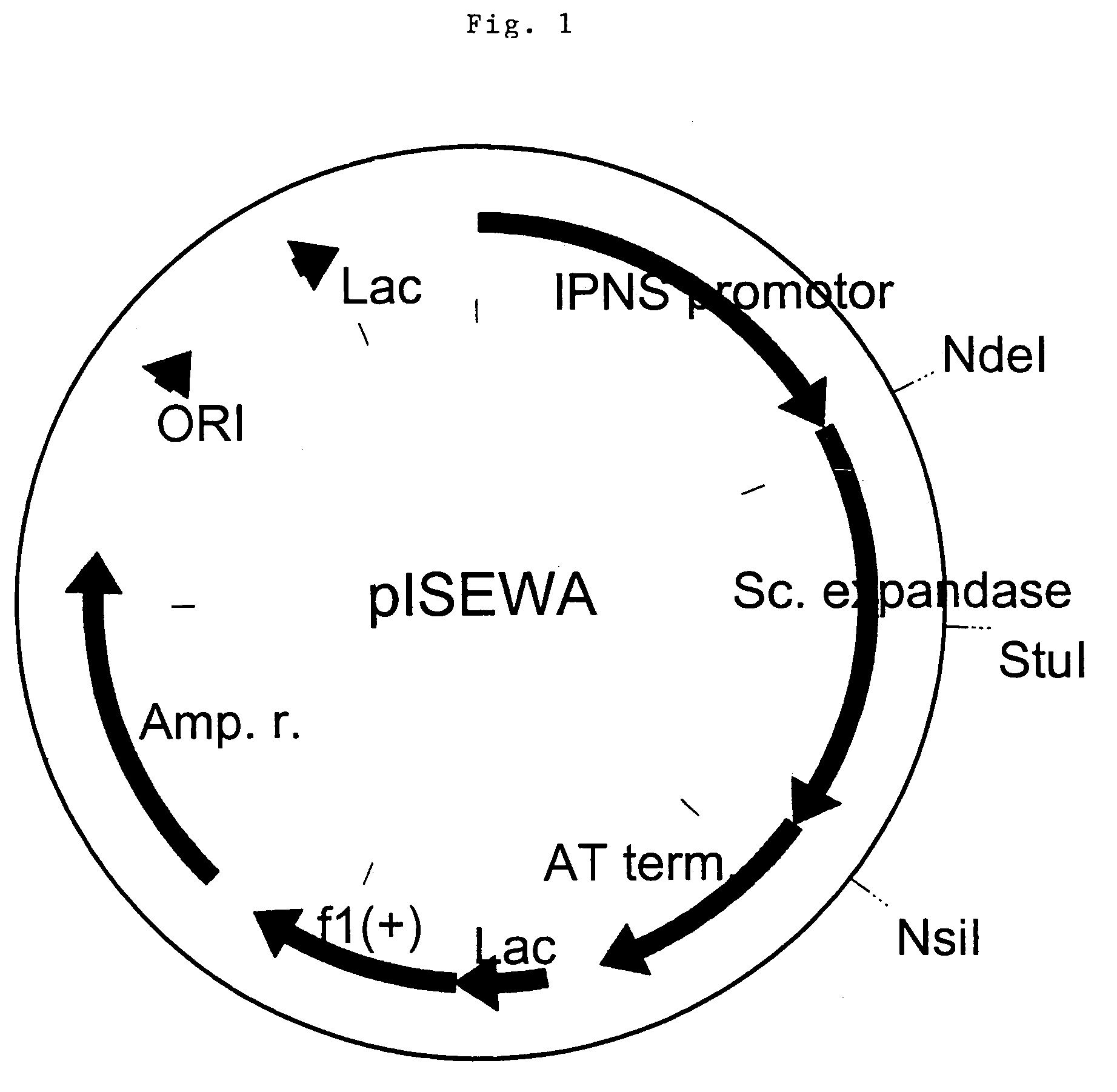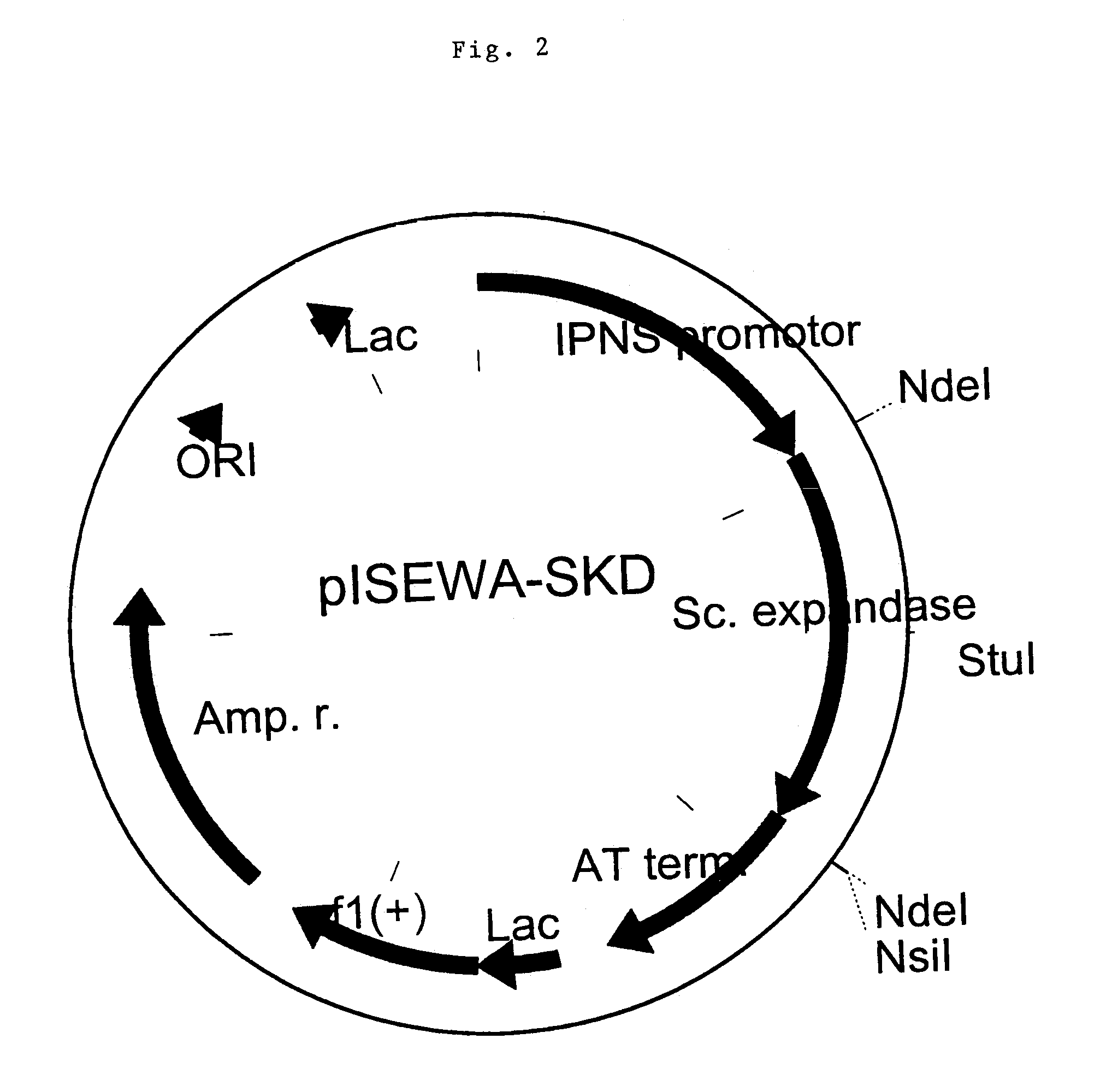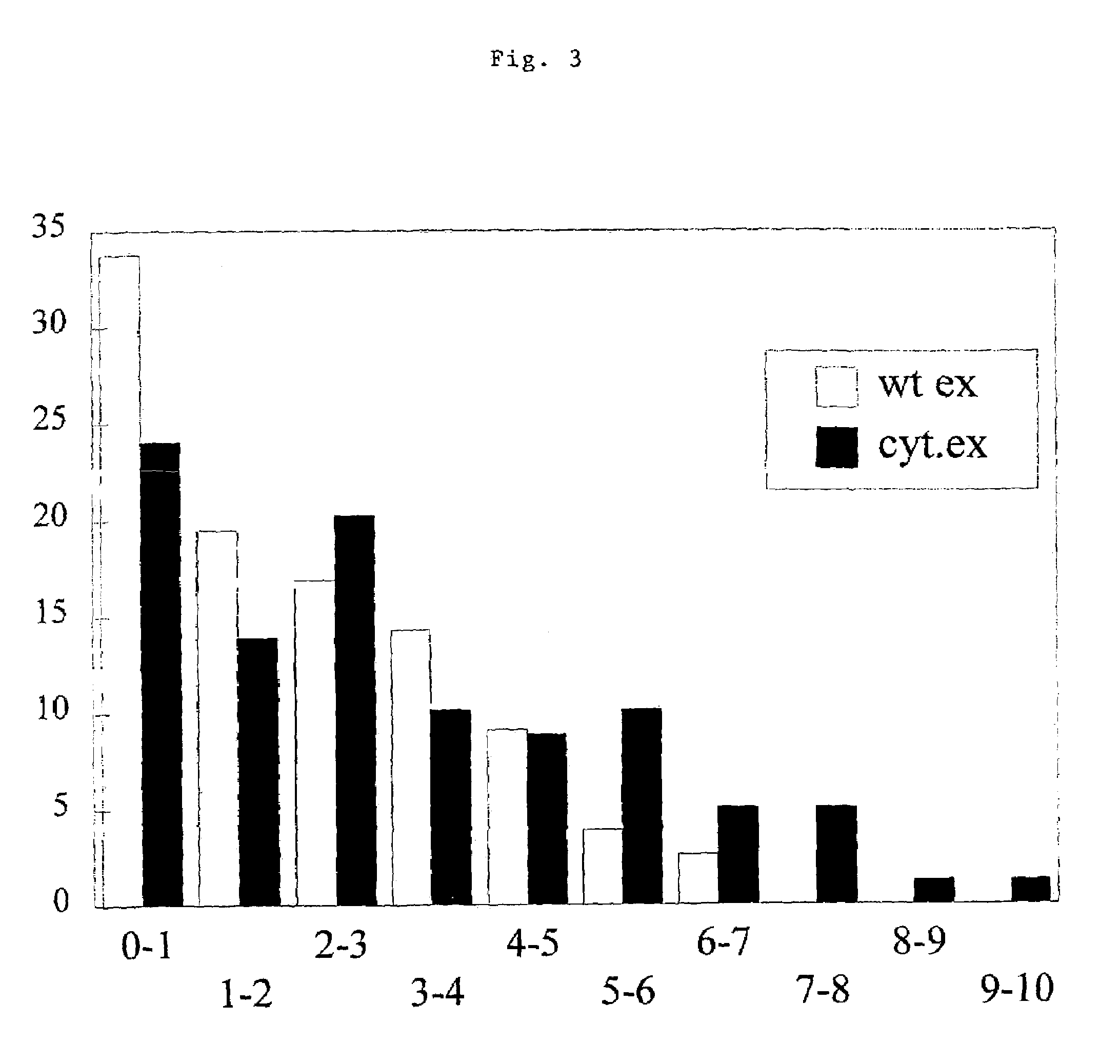Method to localize expandase in the cytosol
a technology of expandase and cytosol, applied in the field of recombinant dna techniques, can solve the problems of complex chemical processing, high cost of cephalosporins, and high cost of penicillins, and achieves the effects of reducing the number of bacterial strains
- Summary
- Abstract
- Description
- Claims
- Application Information
AI Technical Summary
Benefits of technology
Problems solved by technology
Method used
Image
Examples
example 1
Site-directed Mutagenesis of the S. clavuligerus cefE Gene
[0067]Techniques involved in the genetic manipulation of the expandase gene are well described. Sources that can be used as template in PCR reactions include chromosomal DNA preparations from publicly available Streptomyces clavuligerun_strains (such as ATCC 27064), or expression cassetes such pZEx (described in PCT / EP 97 / 03879) and pISEWA (described in EP-02812P). The expandase expression cassette pISEWA (FIG. 1) contains the wild type Streptomyces clavuligerus expandase gene including the IPNS promoter and AT terminator. In order to disrupt the peroxisomal targeting of expandase, the sequence of the C-terminus of CefE is mutated from SKA to SKD. To that end, with pISEWA as a template, a PCR reaction is performed, using primers 1 and 2 (see table 1). PCR is performed with a proof-reading polymerase. After a denaturation step (2 min 98° C.), part of the cefE gene is amplified in 25 cycli (1.15 min 94° C., 45 sec 55° C., 1 min...
example 2
Transformation of a P. chrysogenum Strain
[0069]Techniques involved in the transfer of DNA to protoplasts of P. chrysogenum are well known in the art and described in many references, including Finkelstein and Ball (eds.), Biotechnology of filamentous fungi, technology and products, Butterworth-Heinemann (1992); Bennett and Lasure (eds.) More Gene Manipulations in fungi, Academic Press (1991); Turner, in: Pühler (ed), Biotechnology, second completely revised edition, VHC (1992). The Ca-PEG mediated protoplast transformation is used as described in EP 635574. The constructs pISEWA and pISEWA-SKD are thus introduced into P. chrysogenum Wisconsin 54-1255 (ATC 28089) by co-transformation with GBGLA28 (EP 635574), which enables P. chrysogenum transformants to grow on selection medium containing acetamide as sole nitrogen source. More preferably, a strain is utilised that has a more pronounced capacity to produce penicillins. Examples are strains such as CBS 455.95.
example 3
Selection: Liquid Cultures
[0070]Transformants are purified by repeated cultivation on selective medium. Single stable colonies are used for further screening on the presence of the expandase gene by bioassay. Transformants are grown on agar medium. E. coli ESS2231 is used as indicator bacterium in an agar overlay, that also contains Bacto penase to be able to discriminate between penicillin and cephalosporin production according to methods well known in the art and described for example in Guttiérez et al., Mol. Gen. Genet. 225 (1991), 56–64. The presence of the cefE gene in the transformants is confirmed by PCR as described for example in WO 95 / 04149 on chromosomal DNA, using primers 1 and 2 (Table). Expandase-positive transformants are selected for further screening on the capacity to produce cephalosporins as described for example in WO 95 / 04149. Transformants are used to inoculate shake flasks with liquid medium as described for example in WO 95 / 04149. Transformants are inoculat...
PUM
| Property | Measurement | Unit |
|---|---|---|
| Strain point | aaaaa | aaaaa |
Abstract
Description
Claims
Application Information
 Login to View More
Login to View More - R&D
- Intellectual Property
- Life Sciences
- Materials
- Tech Scout
- Unparalleled Data Quality
- Higher Quality Content
- 60% Fewer Hallucinations
Browse by: Latest US Patents, China's latest patents, Technical Efficacy Thesaurus, Application Domain, Technology Topic, Popular Technical Reports.
© 2025 PatSnap. All rights reserved.Legal|Privacy policy|Modern Slavery Act Transparency Statement|Sitemap|About US| Contact US: help@patsnap.com



